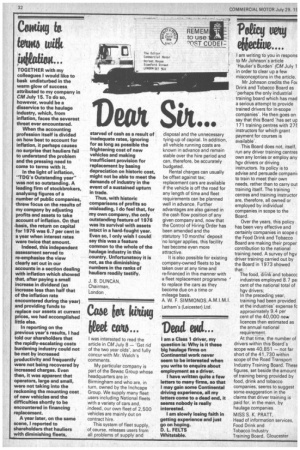eat
Page 34

If you've noticed an error in this article please click here to report it so we can fix it.
starved of cash as a result of inadequate rates, ignoring for as long as possible the frightening cost of new vehicles and making insufficient provision for replacement by basing depreciation on historic cost, might not be able to meet the demands of industry in the event of a sustained upturn in trade.
Thus, with historic comparisons of profits so misleading, I do feel that, for 'my own company, the only outstanding feature of 1976 was its survival with assets intact in a hard-fought year. Even so, I only wish I could say this was a feature common to the whole of the haulage industry in this country. Unfortunateoy it is not, as the diminishing numbers in the ranks of hauliers readily testify.
J B. DUNCAN, Chairman, London . disposal and the unnecessary tying-up of capital. In addition, all vehicle running costs are known in advance and remain stable over the hire period and can, therefore, be accurately budgeted.
Rental charges can usually be offset against tax; replacement cars are available if the vehicle is off the road for any length of time and fleet requirements can be planned well in advance, Further advantages are also gained in the cash flow position of any given company and, now that the Control of Hiring Order has been amended and the statutory 10 months' deposit no longer applies, this facility has become even more attractive.
It is also possible for existing company-owned fleets to be taken over at any time and re-financed in this manner with a fleet replacement programme ' to replace the cars as they become due on a time or mileage basis. A. W. F. SIMMONDS,A.M.I.M.I.




















































































